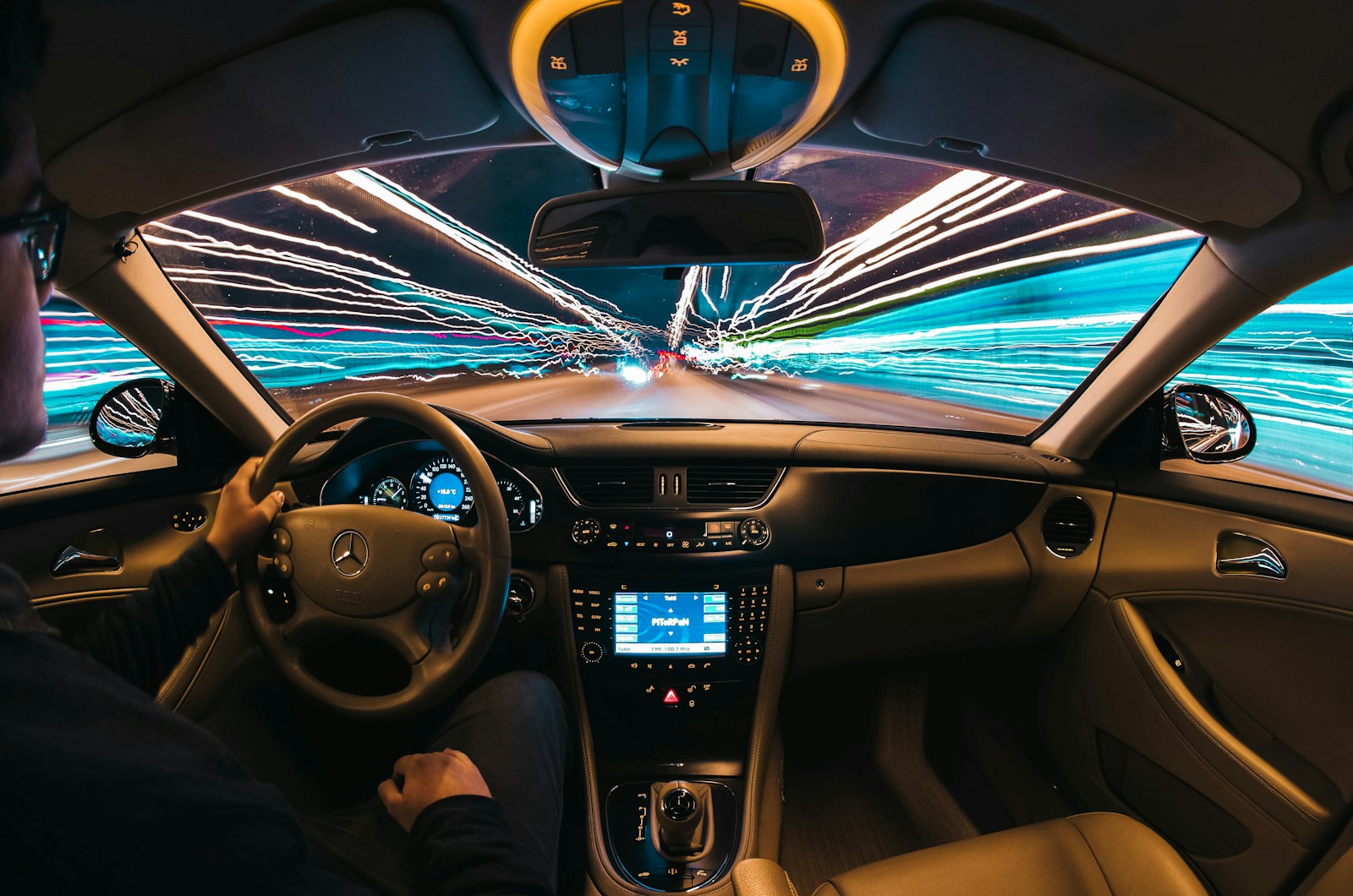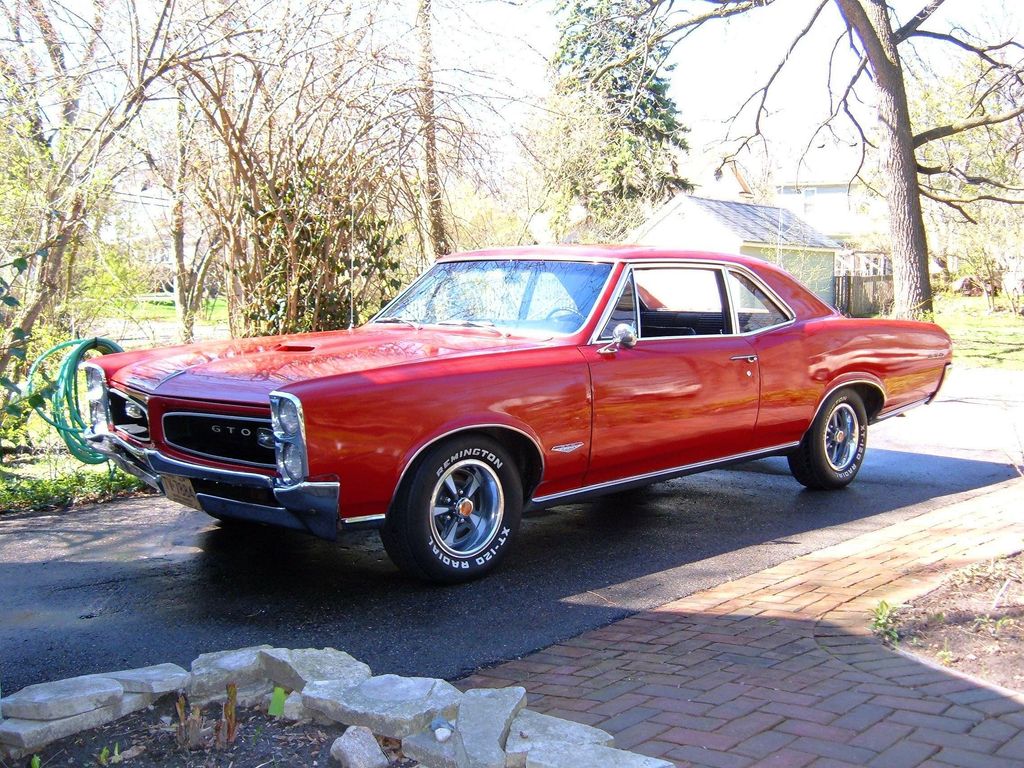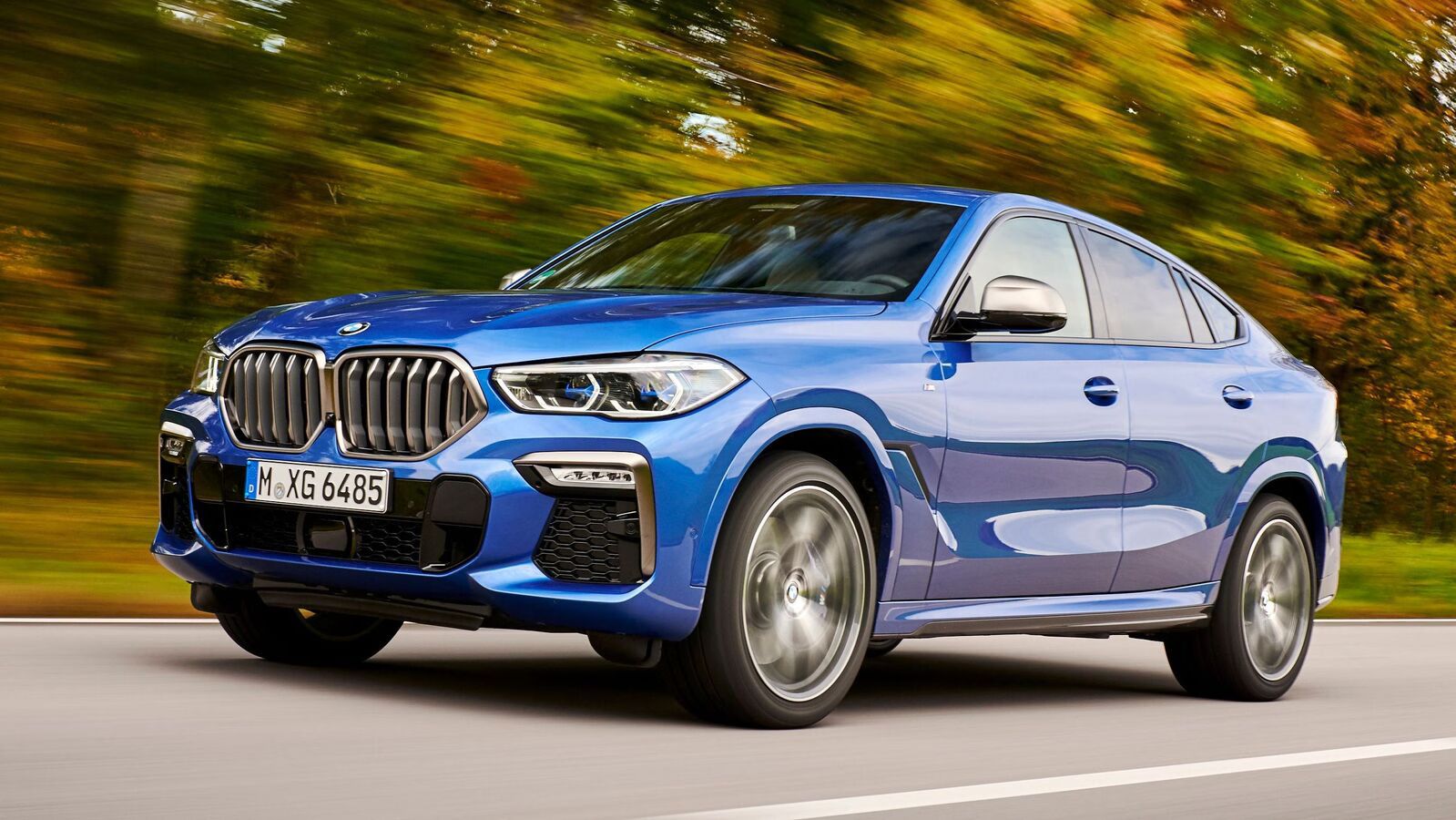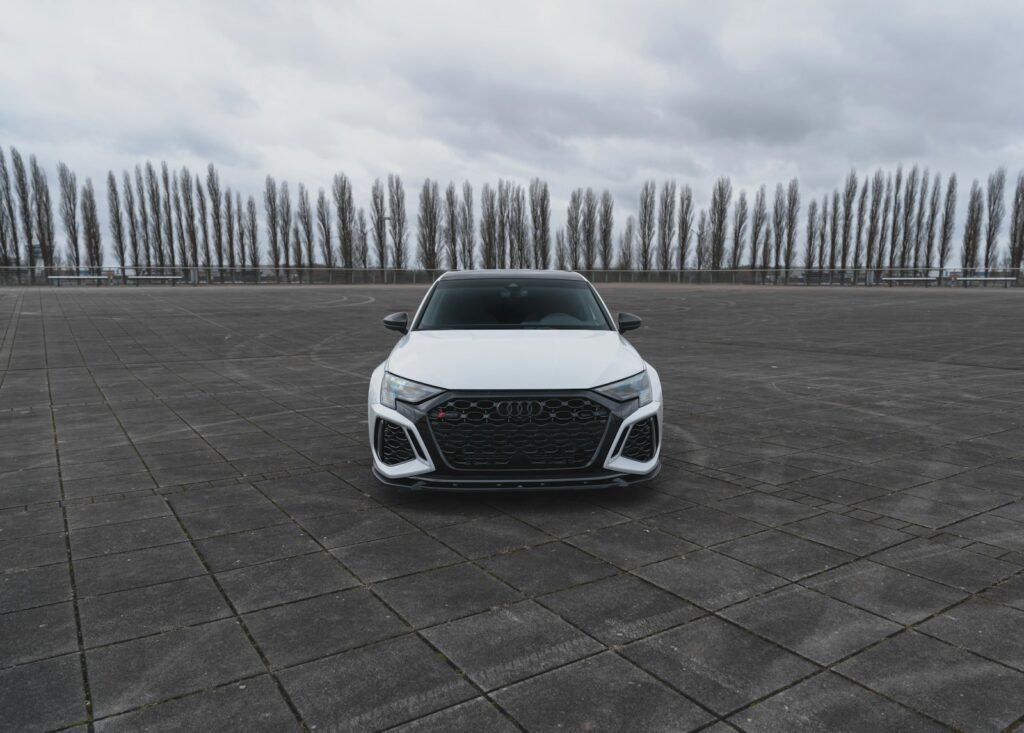
Hatchbacks have long held a unique space in the car market, expertly bridging the gap between everyday practicality and agile driving dynamics. They offer a compact footprint, making them ideal for urban environments, while still providing remarkable versatility for cargo and passengers. For decades, drivers seeking something compact, fun, and capable have instinctively turned to these often-underestimated vehicles, recognizing their inherent value long before they become mainstream sensations.
Yet, the narrative of hatchbacks isn’t solely dominated by the models that top sales charts or garner the most advertising spend. Beneath the surface of widely distributed vehicles lies a fascinating world of underappreciated gems – cars that, despite their limited production or niche appeal, have cultivated fervent loyalty among their owners. These are the vehicles that, while perhaps not always headline-grabbers, consistently deliver an ownership experience that far exceeds expectations, solidifying their reputation through word of mouth rather than marketing.
This article embarks on an in-depth exploration of nine such vehicles: hatchbacks that, whether rare, uniquely engineered, or simply overlooked, have earned deep affection from those lucky enough to have them. We’ll delve into the distinctive design decisions, engineering priorities, and the real-world impact that transforms a mere mode of transport into a cherished companion. These are the daily driver hidden gems that prove customer satisfaction isn’t always tied to popularity, showcasing how some less-celebrated models have become truly legendary in their own right.
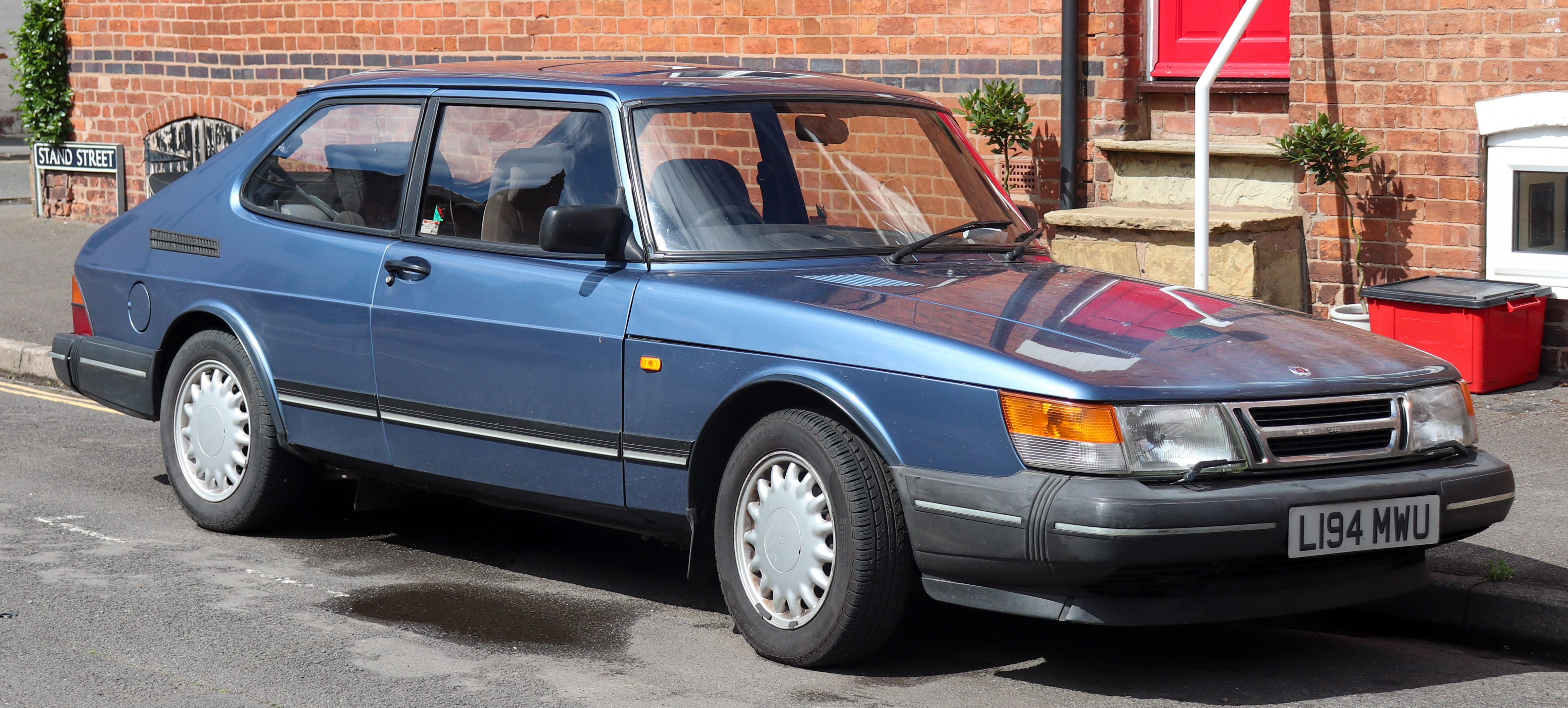
1. **Saab 900 Turbo Hatchback**The Saab 900 Turbo is one of those exceptional cars that quietly forged a powerful emotional connection with its owners, distinguishing itself from the crowd. Emerging in the late 1970s and continuing its run into the early 1990s, the Saab 900 Turbo was never engineered to be the fastest or the most economical car in its segment. Instead, its deep appeal stemmed from an ingenious fusion of intelligent design, a host of quirky yet functional features, and a notably solid, turbocharged performance that stood out in its era.
What truly set the Saab 900 apart were the thoughtful touches infused by its engineers, many of whom brought their expertise from the aerospace industry. This unique background manifested in distinctive design elements, from the expansive wraparound windshield that offered unparalleled visibility to the centrally mounted ignition that became a signature quirk. These details collectively endowed the 900 with a unique identity, resonating profoundly with drivers who craved something genuinely different from the homogeneous mass-market vehicles of the time.
Beyond its unique aesthetics, another key reason for the Saab 900 Turbo’s strong following was its exemplary real-world driving behavior. Despite its front-wheel-drive configuration, the car felt remarkably planted and confident across a variety of conditions, a trait particularly valued by drivers in colder climates where snow and ice frequently made winter driving a significant challenge. Its robust structure and excellent visibility further cemented Saab’s reputation for safety, adding another layer to its enduring appeal.
The turbocharged four-cylinder engine, while not aggressively powerful, delivered ample punch to make highway driving genuinely engaging, especially when paired with the manual transmission versions. These manual variants offered a particularly satisfying driving experience, etched fondly into the memories of many owners. This blend of reliability, engaging performance, and safety considerations cultivated a lasting trust and affection for the vehicle.
Practicality was also a strong suit, with the Saab 900 Turbo hatchback boasting impressive cargo capacity for its size. The design, featuring a long rear window and a versatile liftback, allowed owners to effortlessly transport everything from bicycles to large boxes. This exceptional utility, combined with its renowned durability, fostered long-term bonds, making it common to see Saab 900s on the road with well over 200,000 miles, many still in excellent condition thanks to the dedicated maintenance of loyal fans. This sense of dependability and character is a rarity in many vehicles, even decades later.
Car Model Information: 2019 Volkswagen Tiguan 2.0T SE 4MOTION
Name: Saab 900
Caption: Saab 900 SE Turbo 3-door
Manufacturer: Saab-Scania,Saab Automobile
Production: 1978–1998
Assembly: Sweden:,Trollhättan,Arlöv,Malmö,Uusikaupunki
Class: Compact executive car
Layout: Front-engine, front-wheel-drive layout
Predecessor: Saab 99
Successor: Saab 9-3
Categories: 1980s cars, 1990s cars, All Wikipedia articles needing clarification, All articles needing additional references, All articles that may contain original research
Summary: The Saab 900 is a mid-sized automobile produced by Swedish manufacturer Saab from 1978 until 1998 in two generations: the first from 1978 to 1994, and the second from 1994 to 1998.
The first-generation car was based on the Saab 99 chassis, though with a longer front end to meet U.S. frontal crash regulations and to make room for the turbo-charged engines, air conditioning and other equipment that was not available in the early days of the 99 model. The 900 was produced in 2- and 4-door sedan, and 3- and 5-door hatchback configurations and, from 1986, as a cabriolet (convertible) model. There were single- and twin-Zenith carburettor; fuel injected, and turbocharged engines, including Full Pressure Turbo (FPT) and, in European models during the early 1990s, Low Pressure Turbos (LPT).
Get more information about: Saab 900
Buying a high-performing used car >>>
Brand: Saab Model: 900 Turbo
Price: $12,956 Mileage: 115,423 mi.

2. **Volkswagen Golf Mk2 Country**The Volkswagen Golf Country represented an unexpected and highly unusual deviation from the standard Golf Mk2 lineage, surprising many in the automotive world. Conceived through a collaboration with the Austrian firm Steyr-Daimler-Puch, this rugged hatchback was distinguished by its purposeful four-wheel drive system, a notably lifted suspension, and a suite of genuine off-road equipment, including a protective skid plate and a distinctive exposed, rear-mounted spare tire.
The Volkswagen Golf Country represented an unexpected and highly unusual deviation from the standard Golf Mk2 lineage, surprising many in the automotive world. Conceived through a collaboration with the Austrian firm Steyr-Daimler-Puch, this rugged hatchback was distinguished by its purposeful four-wheel drive system, a notably lifted suspension, and a suite of genuine off-road equipment, including a protective skid plate and a distinctive exposed, rear-mounted spare tire.
Its appearance, more akin to a miniature SUV than a conventional hatchback, was precisely what endeared it to a specialized niche of buyers. Produced for a brief window in the early 1990s, fewer than 8,000 units were ever manufactured, solidifying its status as one of the rarest Golf variants ever to roll off the assembly line. This scarcity, combined with its unique proposition, instantly marked it as a collector’s item in waiting.
Owners cherished the Golf Country primarily for its remarkable versatility. It demonstrated an impressive capability to navigate gravel roads and light off-road terrain with an ease that belied its compact size, all while remaining perfectly manageable for urban driving. For individuals residing in mountainous or rural regions, it offered an ideal blend of robust traction and spatial efficiency. Crucially, unlike many small hatchbacks, it never felt vulnerable when adverse weather struck or when the paved road gave way to dirt. Its mechanical and straightforward Syncro four-wheel-drive system only added to its charm and legendary reliability.
Inside, the Golf Country maintained the characteristic simplicity and robust build quality that Volkswagen was celebrated for during the Mk2 generation. The cabin, while minimalistic, was engineered for durability. The seating position was noticeably elevated due to the vehicle’s lifted body, affording drivers an enhanced view of the road ahead. In many respects, it offered an early, prescient glimpse into what would later become the enormously popular crossover segment, proving to be ahead of its time.
Today, these cars command significant reverence among VW enthusiasts, sought after as legitimate collector’s items. Locating one in good, original condition is a considerable challenge, yet when one does appear, it invariably draws attention—not for its speed or extravagant styling, but for its inherent rarity and uncompromisingly purpose-built nature. The Golf Country may not have made a global commercial splash in its day, but its devoted cadre of owners continue to praise it for its visionary design and lasting capability.
Car Model Information: 2019 Volkswagen Tiguan 2.0T SE 4MOTION
Name: Volkswagen Golf Mk2 (19E)
Manufacturer: Volkswagen
Production: September 1983–1992,1985–1992 (Yugoslavia),6.3 million units
Assembly: Wolfsburg,Zwickau,Audi Brussels,Sarajevo,New Stanton, Pennsylvania,Puebla, Puebla,Uitenhage,Graz
Predecessor: Volkswagen Golf Mk1
Successor: Volkswagen Golf Mk3
Class: Small family car
BodyStyle: hatchback
Layout: Front-engine, front-wheel-drive layout,front-wheel drive
Platform: Volkswagen Group A platform#A2
Engine: ubl
Transmission: manual transmission
Wheelbase: 2470 mm
Abbr: on
Length: 3985 mm
Order: flip
Width: convert
Height: 1415 mm
Weight: convert
Related: Volkswagen Jetta (A2),Volkswagen Corrado,SEAT Toledo
Designer: Herbert Schäfer
Categories: 1990s cars, All-wheel-drive vehicles, All articles needing additional references, All articles with style issues, All articles with unsourced statements
Summary: The Volkswagen Golf Mk2 is a hatchback, the second generation of the Volkswagen Golf and the successor to the Volkswagen Golf Mk1. It was Volkswagen’s highest volume seller from 1983 and ended in (German) production in late 1992, to be replaced by the Volkswagen Golf Mk3. The Mk2 was larger than the Mk1; its wheelbase grew slightly (+ 75 mm (3.0 in)), as did exterior dimensions (length + 180 mm (7.1 in), width + 55 mm (2.2 in), height + 5 mm (0.2 in)). Weight was up accordingly by about 120 kg (260 lb). Exterior design, developed in-house by VW design director Schäfer, kept the general lines of its Giugiaro-designed predecessor, but was slightly more rounded. All told, about 6.3 million second-generation Golfs were built.
Get more information about: Volkswagen Golf Mk2
Buying a high-performing used car >>>
Brand: Volkswagen Model: Golf Country
Price: $12,956 Mileage: 115,423 mi.

3. **Honda CR-X**The Honda CR-X holds a distinguished place in automotive history as one of the most universally beloved compact hatchbacks ever produced. Its debut in the 1980s and subsequent presence through the early 1990s introduced a winning formula: sharp, distinctive styling, exceptional gas mileage, and a surprisingly sporty and engaging driving experience. While perhaps not as inherently rare in total production numbers as some other vehicles on this list, finding a clean, well-preserved example today is increasingly difficult, making it a genuinely rare and cherished sight on modern roads.
Owners consistently speak with effusive praise about the CR-X’s masterly balance of efficiency and pure driving fun, frequently declaring it among the finest daily drivers they have ever owned. The vehicle’s inherently lightweight design, coupled with its responsive and finely tuned handling characteristics, allowed it to deliver a driving sensation more akin to a nimble go-kart than a conventional economy car, fostering an immediate and intuitive connection with the driver.
A significant part of the CR-X’s enduring appeal lay in its refreshing simplicity. It was a vehicle that wasn’t burdened with an excessive array of features or unnecessary complexities; instead, what it possessed was meticulously engineered to function flawlessly. The cockpit was intentionally driver-focused, promoting an immersive experience, while the manual gearbox operated with a fluidity that was truly segment-leading. Moreover, outward visibility was excellent, further contributing to a sense of control and confidence behind the wheel.
For those who truly relished the act of driving, the CR-X felt like a natural extension of their own body. Its lightness and nimbleness, combined with a profound connection to the road, delivered a tactile feedback that few contemporary cars can genuinely replicate. Even the more fuel-efficient HF version, with its lower power output, offered a deeply enjoyable experience, a testament to its minimal weight and the superb tuning of its suspension, proving that power wasn’t the sole arbiter of fun.
Exceptional fuel economy was yet another compelling reason for owners’ deep attachment to the CR-X. Certain trims were capable of achieving well over 40 miles per gallon, a figure that remains impressive even by today’s rigorous standards. In an era marked by fluctuating gas prices, where economy cars often equated to a monotonous driving experience, the CR-X brilliantly offered both remarkable thrift and genuine thrills. It also proved to be a surprisingly durable vehicle, consistently accumulating high mileage without succumbing to major mechanical maladies, thereby building an invaluable trust between the car and its owner—the kind of bond that transforms a regular car into a long-term, cherished favorite.
Car Model Information: 2024 Honda CR-V Hybrid Sport AWD
Name: Honda CR-X
Manufacturer: Honda
Aka: Honda Ballade Sports CR-X (Japan),Honda Civic CRX
Production: 1983–1991
ModelYears: 1984–1991
Assembly: List of Honda facilities#Japan,Suzuka, Mie
Class: Sport compact
BodyStyle: liftback
Layout: Front-engine, front-wheel-drive layout
Related: Honda Civic
Successor: Honda CR-X del Sol
Categories: 1990s cars, All articles with unsourced statements, Articles with short description, Articles with unsourced statements from April 2025, Articles with unsourced statements from December 2020
Summary: The Honda CR-X (originally launched as the Honda Ballade Sports CR-X in Japan) is a sport-compact car manufactured by Honda from 1983 until 1991. Nearly 400,000 were produced. The first-generation CRX was marketed in some regions outside Japan as the Honda Civic CRX. Although there are many supposed definitions for the initialism CR-X, the most widely accepted is “Civic Renaissance Experimental”. It was marketed as part of the Civic (and briefly Ballade) model ranges.
In North America, the CRX was marketed as an economy sport two-seat vehicle while Japanese and European market cars came with a 2+2 seating arrangement. Redesigned for the 1988 model year and produced until 1991, the front-wheel-drive CR-X was popular for its performance, nimble handling, and good fuel economy. The CR-X was replaced by the del Sol, which was marketed as a CR-X in some markets.
Get more information about: Honda CR-X
Buying a high-performing used car >>>
Brand: Honda Model: CR-X
Price: $32,485 Mileage: 33,452 mi.

4. **Mazda 323 GTX**The Mazda 323 GTX is a hatchback that, while an undeniable gem, remains largely unremembered by many, a testament to its limited production and focused appeal primarily among a discerning group of drivers. Manufactured for a brief period in the late 1980s, the 323 GTX was an authentic rally-bred hot hatch, distinguished by its powerful turbocharged engine and a sophisticated all-wheel-drive system. It never achieved widespread sales figures, often overshadowed by more prominently marketed performance compacts of its time.
The Mazda 323 GTX is a hatchback that, while an undeniable gem, remains largely unremembered by many, a testament to its limited production and focused appeal primarily among a discerning group of drivers. Manufactured for a brief period in the late 1980s, the 323 GTX was an authentic rally-bred hot hatch, distinguished by its powerful turbocharged engine and a sophisticated all-wheel-drive system. It never achieved widespread sales figures, often overshadowed by more prominently marketed performance compacts of its time.
However, for the fortunate few who had the privilege of experiencing it, the 323 GTX was nothing short of extraordinary. It masterfully distilled the exhilaration of motorsport-inspired engineering into a package that was simultaneously practical, surprisingly affordable, and exceptionally capable. This unique blend of attributes allowed it to carve out a distinct identity, earning a devoted following that knew its true worth.
One of the most compelling characteristics of the 323 GTX was its outstanding performance in challenging conditions. The synergistic combination of its lightweight chassis and a full-time all-wheel-drive system provided unparalleled grip and stability, whether tackling twisty backroads with enthusiasm or navigating treacherous snowy highways with unwavering confidence. This was not a vehicle designed for luxury, nor did it boast a plush, refined interior. Instead, its brilliance lay in its mechanical design, which imbued it with the feel of a truly hidden performance gem.
The 1.6L turbocharged engine provided more than enough punch to keep every drive interesting, while the car’s chassis was expertly tuned for spirited driving, making it an absolute joy to pilot. It possessed the uncanny ability to surprise far more expensive and ostensibly powerful vehicles in the right driving environment, proving that genuine performance isn’t always about outright horsepower. Owners frequently described the 323 GTX as one of the most profoundly fun cars they had ever owned, a sentiment born from its exceptional balance and the direct, engaging connection it offered to the road.
It wasn’t merely about raw power; it was about the nuanced interplay of balance and direct feedback, encouraging confident driving and richly rewarding those who dared to push its limits a little. It was also, for many, a car that subtly taught its owner how to become a better driver, thanks to its lively handling and the instant responsiveness of its powertrain. While it admittedly demanded a bit more maintenance than a typical economy hatchback, the sheer payoff in driving enjoyment rendered every effort worthwhile. Because it was never mass-produced, parts eventually became increasingly difficult to source, leading many 323 GTX models to be sadly neglected or scrapped. However, those who diligently maintained and kept theirs running often developed an exceptionally deep and lasting attachment. The compelling fusion of rarity, performance, and everyday practicality made it truly unforgettable, ensuring that even today, when one is spotted, it’s typically accompanied by admiring glances, shared stories, and genuine reverence. For the lucky few who truly experienced it, the Mazda 323 GTX unequivocally represents a high point in the evolution of affordable, driver-focused hatchbacks.
Car Model Information: 2019 Volkswagen Tiguan 2.0T SE 4MOTION
Name: Mazda Familia
Caption: 2003 Mazda 323 (BJ) sedan
Manufacturer: Mazda
Production: 1963–2003
Class: Compact car
Layout: front-engine, rear-wheel-drive layout,front-engine, front-wheel-drive layout
Successor: Mazda Familia Van
Categories: 1970s cars, 1980s cars, 1990s cars, 2000s cars, All Wikipedia articles written in American English
Summary: The Mazda Familia (Japanese: マツダ ファミリア, Matsuda Famiria), also marketed prominently as the Mazda 323, Mazda Protegé and Mazda Allegro, is a small family car that was manufactured by Mazda between 1963 and 2003. The Familia line was replaced by the Mazda3/Axela for 2004.
It was marketed as the Familia in Japan, which means “family” in Latin. For export, earlier models were sold with nameplates including: “800”, “1000”, “1200”, and “1300”. In North America, the 1200 was replaced by the Mazda GLC, with newer models becoming “323” and “Protegé”. In Europe, all Familias sold after 1977 were called “323”.
The Familia was also rebranded as the Ford Laser and Ford Meteor in Asia, Oceania, Southern Africa, some Latin American countries and, from 1991, as the Ford Escort and Mercury Tracer in North America. In addition, the Familia name was used as the Mazda Familia Wagon/Van, a badge-engineered version of the Nissan AD wagon (1994–2017) and Toyota Probox (2018–present).
Mazda Familias were manufactured in the Hiroshima Plant and also assembled from “knock-down kits” in various countries including Taiwan, Indonesia, Malaysia, South Africa, Zimbabwe, Colombia, and New Zealand. Some of these plants kept manufacturing the Familia long after it was discontinued at home.
Get more information about: Mazda Familia
Buying a high-performing used car >>>
Brand: Mazda Model: 323 GTX
Price: $12,956 Mileage: 115,423 mi.
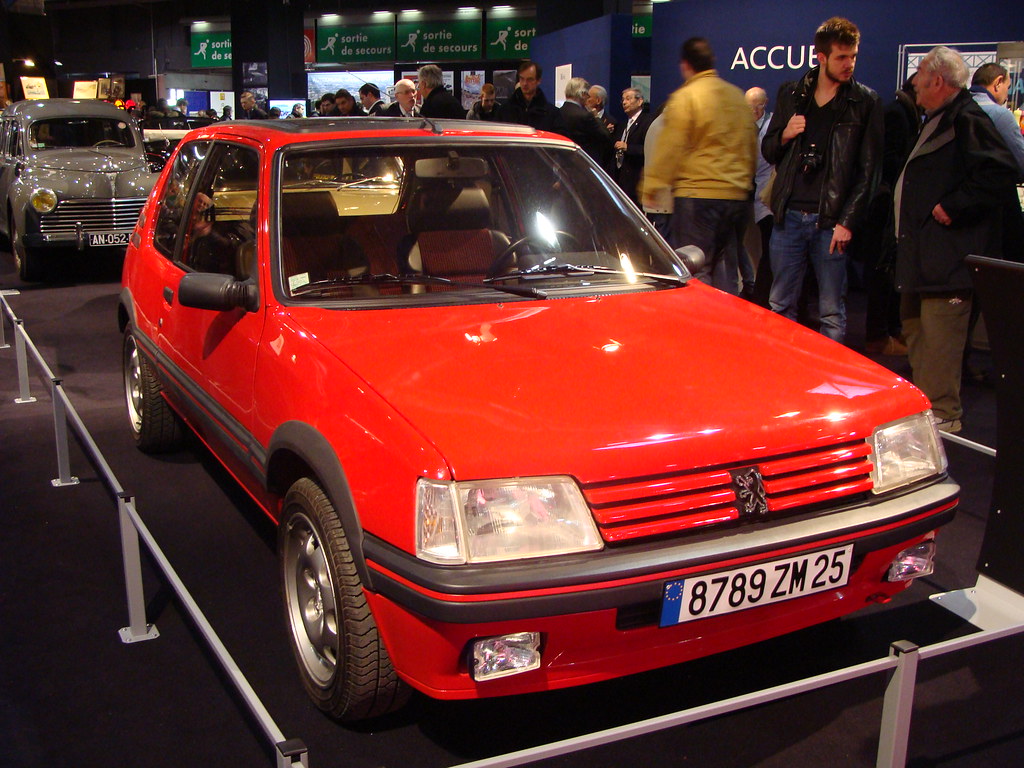
5. **Peugeot 205 GTI**The Peugeot 205 GTI is consistently lauded as one of the finest-driving hatchbacks of the 1980s and early 1990s, particularly within European automotive circles. Its mythical status among American car enthusiasts is largely amplified by the fact that it never saw an official release in the U.S. market. This small, incredibly sharp, and exceptionally agile machine emphatically demonstrated that immense horsepower was not a prerequisite for an exhilarating driving experience. Many who had the pleasure of driving it attest that it was among the most responsive and communicative cars they had ever owned, possessing a vibrant, alive quality that few modern vehicles can truly replicate.
The Peugeot 205 GTI is consistently lauded as one of the finest-driving hatchbacks of the 1980s and early 1990s, particularly within European automotive circles. Its mythical status among American car enthusiasts is largely amplified by the fact that it never saw an official release in the U.S. market. This small, incredibly sharp, and exceptionally agile machine emphatically demonstrated that immense horsepower was not a prerequisite for an exhilarating driving experience. Many who had the pleasure of driving it attest that it was among the most responsive and communicative cars they had ever owned, possessing a vibrant, alive quality that few modern vehicles can truly replicate.
Owners absolutely adored the unadulterated purity of the driving experience the 205 GTI offered. There were no complex driver aids to interfere, no turbos to spool, and no unnecessary weight to detract from its inherent athleticism. What remained was a masterfully balanced chassis, incredibly tight and precise steering, and a naturally aspirated engine that practically begged to be revved out to its redline. Both the 1.6L and 1.9L versions possessed their own distinct character, with the larger engine providing a bit more mid-range thrust, but crucially, both delivered the kind of unfiltered feedback that transformed even the shortest of trips into a genuinely enjoyable event. The connection between the driver, the road, and the machine felt remarkably direct and refreshingly honest.
The distinctive styling of the 205 GTI also played a significant role in its enduring appeal. It featured a sporty, squared-off silhouette that commanded attention without ever appearing ostentatious or over-designed. This confident aesthetic perfectly encapsulated its performance credentials.
Inside, the supportive seats provided excellent comfort and lateral hold, while the driving position was thoughtfully engineered to be perfectly suited for both long-distance comfort and precise control during spirited maneuvers. The car felt inherently sporty without sacrificing everyday comfort, making it an effortless daily driver that could still be passionately enjoyed on winding country roads. Its underlying simplicity also meant fewer components to malfunction, and despite its seemingly delicate appearance, the car proved to be surprisingly durable over time, a testament to robust French engineering.
Because Peugeot did not extensively market this model in every country, and a great many of them were driven with the enthusiastic vigor they deserved, clean and original examples are now quite rare commodities. Owners who steadfastly held onto their 205 GTIs developed an extraordinarily strong emotional bond, often citing it as their all-time favorite car. It was precisely the kind of car that people remembered fondly for years, even decades, after they eventually parted ways with it. Enthusiast forums and classic car groups continue to discuss these vehicles with a level of reverence that newer models very rarely manage to earn. The 205 GTI may not have been common, but for those who truly understood its magic, it set an almost unreachable standard that few hatchbacks have managed to meet since.” , “_words_section1”: “1997
Continuing our journey into the world of hatchbacks that deserve far more recognition, we now turn our attention to four additional vehicles that, despite their undeniable merits, often fly under the radar. These aren’t just cars; they are compelling daily drivers that offer a unique blend of practicality, performance, and personality, earning them a rightful place as hidden gems beyond mainstream recognition. Each of these models presents a strong case for a second look, proving that innovation and driving enjoyment aren’t exclusive to the most expensive or heavily advertised segments.
Car Model Information: 2019 Volkswagen Tiguan 2.0T SE 4MOTION
Name: Peugeot 205
Caption: 5-door
Manufacturer: Peugeot
Production: 1983–1999
Assembly: Mulhouse,Cerizay,Madrid,Los Andes, Chile,Changhua,Tehran,Sopriam
Designer: Gerard Welter,Pininfarina
Class: Supermini
BodyStyle: hatchback,convertible,panel van
Related: Peugeot 309
Layout: Front-engine, front-wheel-drive layout,Mid-engine, four-wheel-drive layout
Engine: ubl
Transmission: Automatic transmission,4/5-speed manual
Wheelbase: 2420 mm
Abbr: on (Cabriolet)
Length: 3705 mm
Width: convert,1589 mm
Height: convert,1354 mm
Weight: convert
Predecessor: Peugeot 104,Talbot Samba,Peugeot 204
Successor: Peugeot 106,Peugeot 206
Platform: PSA PF2 platform
Categories: 1990s cars, All-wheel-drive vehicles, All articles with unsourced statements, Articles with short description, Articles with unsourced statements from April 2011
Summary: The Peugeot 205 is a four-passenger, front-engine, supermini (B-segment) car manufactured and marketed by Peugeot over a sixteen-year production run from 1983 to 1999, over a single generation. Developed from Projet M24 and introduced on 25 February 1983, the 205 replaced the Peugeot 104 and the Talbot Samba, using major elements from their design. It won What Car?’s Car of the Year for 1984. It was also declared “car of the decade” by CAR Magazine in 1990. Peugeot stopped marketing the 205 in 1999 in favor of its new front-engined 206. The 106, which was introduced in 1991, effectively took over as Peugeot’s smaller front-engined model in their lineup. The latter was developed as a close sibling of the Citroën AX, sharing many components and a platform that later evolved into the Citroën Saxo.
Get more information about: Peugeot 205
Buying a high-performing used car >>>
Brand: Peugeot Model: 205 GTI
Price: $12,956 Mileage: 115,423 mi.
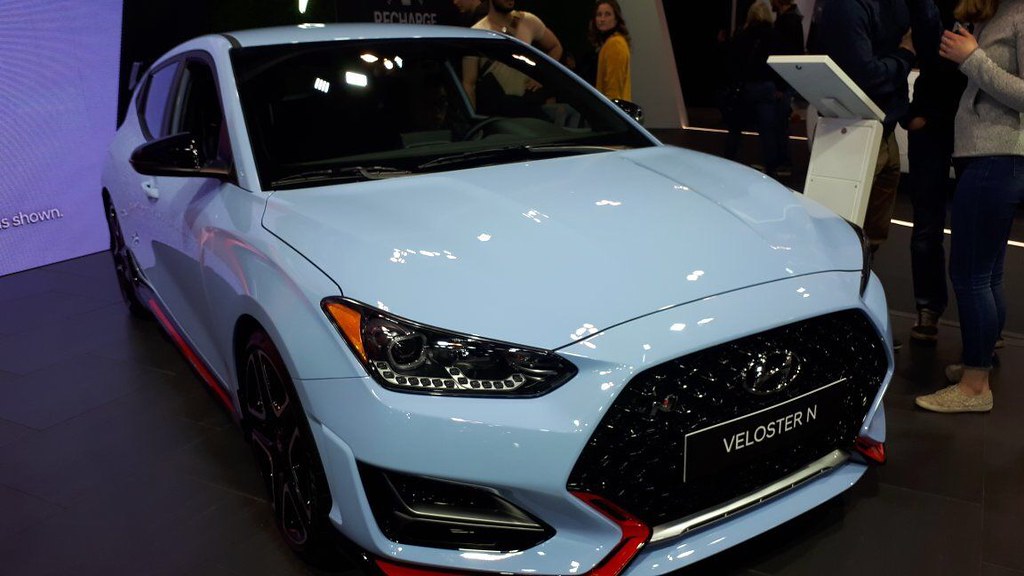
6. **Hyundai Veloster N**When Hyundai first unleashed the Veloster N, it sent a clear message to the automotive world: they were no longer just about sensible, budget-friendly transportation. The Veloster N emerged as a potent and surprisingly sophisticated answer to the established hot hatch segment, a bold statement challenging the likes of the venerable Ford Focus ST and the iconic Volkswagen GTI. This car quickly carved out a niche for itself, offering a driving experience that was not only exhilarating but also remarkably accessible, a true testament to Hyundai’s burgeoning performance capabilities.
When Hyundai first unleashed the Veloster N, it sent a clear message to the automotive world: they were no longer just about sensible, budget-friendly transportation. The Veloster N emerged as a potent and surprisingly sophisticated answer to the established hot hatch segment, a bold statement challenging the likes of the venerable Ford Focus ST and the iconic Volkswagen GTI. This car quickly carved out a niche for itself, offering a driving experience that was not only exhilarating but also remarkably accessible, a true testament to Hyundai’s burgeoning performance capabilities.
At the heart of the Veloster N’s appeal lies its impressive mechanical prowess. Under the hood, a vibrant 275-horsepower turbocharged engine provides ample thrust, ensuring that acceleration is always urgent and engaging. More than just raw power, however, it’s the car’s track-tuned chassis that truly elevates the experience. This meticulous engineering allows the Veloster N to attack corners with a confidence and precision that belies its affordable price tag, making it a formidable competitor on both spirited backroads and occasional track days.
What makes the Veloster N particularly underappreciated is its ability to deliver such a high level of performance and driver engagement without demanding a premium. For budget-conscious enthusiasts who might traditionally gravitate towards more established performance brands, the Veloster N offers an unexpectedly thrilling package. It provides a direct, visceral connection to the road, fostering a sense of excitement and capability that is often missing in its price bracket, truly making it a fantastic choice for those who value driving thrills above all else.
This isn’t merely a car built for speed; it’s a meticulously engineered machine that aims to involve the driver in every aspect of the journey. The responsiveness of its steering, the tenacity of its grip, and the satisfying snarl of its exhaust all contribute to an immersive experience. While some might overlook it due to brand perception or its relatively newer entry into the performance arena, the Veloster N stands as a shining example of how a well-executed hot hatch can redefine expectations and become a cherished daily driver for those seeking adventure in their commute.
Car Model Information: 2019 Volkswagen Tiguan 2.0T SE 4MOTION
Name: Hyundai Veloster
Manufacturer: Hyundai Motor Company
Production: 2011–2022
Class: Sport compact car
Layout: Front-engine, front-wheel-drive layout
BodyStyle: hatchback
Predecessor: Hyundai Tiburon
ModelYears: 2012–2022
Assembly: Ulsan
Categories: All Wikipedia articles in need of updating, All articles with unsourced statements, Articles containing Korean-language text, Articles with short description, Articles with unsourced statements from May 2018
Summary: The Hyundai Veloster (Korean: 현대 벨로스터, romanized: Hyeondae Belloseuteo) is a compact car which was produced by Hyundai from 2011 until 2022. The car differs from most other hatchbacks with its asymmetrical door configuration, featuring one large door on the driver side and two smaller doors on the passenger side. This configuration is more common on commercial vehicles and minivans.
Get more information about: Hyundai Veloster
Buying a high-performing used car >>>
Brand: Hyundai Model: Veloster N
Price: $12,956 Mileage: 115,423 mi.

